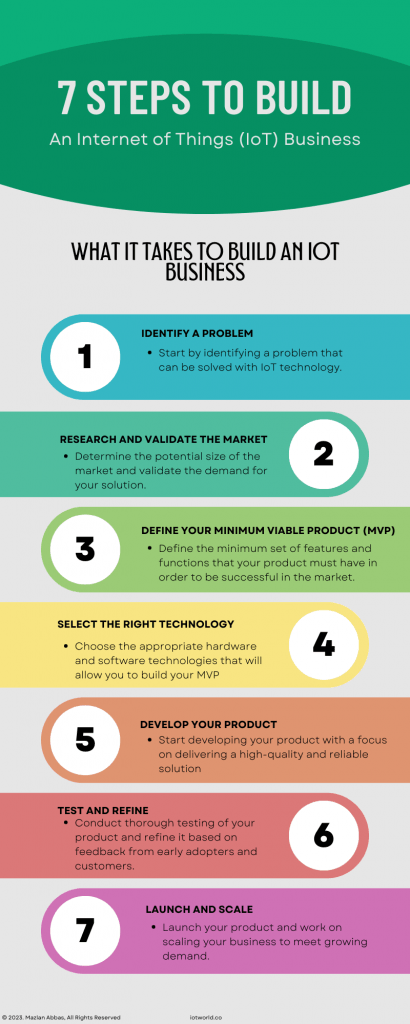Starting an Internet of Things (IoT) initiative necessitates a series of exact steps that demand an attentive eye for detail, encompassing the delineation of objectives, selecting suitable hardware and software, and crafting a development plan. Below is a step-by-step methodology to guide you through the process:
Clarify the objectives:
Before embarking on an IoT endeavor, having a clear grasp of the desired outcome is paramount. Articulate the problem you intend to solve or the objectives of your project. This will aid in making well-informed decisions concerning hardware, software, and other requirements.
Choose the hardware:
IoT projects typically comprise sensors, actuators, and communication modules. Here are some of the most preferred hardware alternatives for IoT projects:
Microcontrollers: Arduino, ESP8266, ESP32, Raspberry Pi, and other single-board computers. Sensors: Temperature, humidity, motion, light, GPS, etc. Actuators: Motors, servos, relays, etc. Communication modules: Wi-Fi, Bluetooth, LoRa, Zigbee, cellular, etc.
Select the software:
To program your IoT devices, you will require software tools and platforms for storing, processing, and visualizing data. Some of the most preferred options include:
Programming languages: C/C++, Python, JavaScript, etc. IoT platforms: FAVORIOT, AWS IoT, Google Cloud IoT, Microsoft Azure IoT, IBM Watson IoT, etc. Data storage: InfluxDB, TimescaleDB, Firebase, etc. Data processing: Apache Kafka, Apache Flink, Node-RED, etc. Data visualization: Grafana, Kibana, Tableau, etc.
Prototype development:
Initiate the process by fabricating a rudimentary prototype of your IoT system. This will help identify potential glitches and validate whether your chosen hardware and software tools meet your project’s requirements.
Connectivity planning:
Determine how your IoT devices communicate with each other and the cloud (or IoT Platforms such as FAVORIOT). Consider range, power consumption, and data transmission rates when selecting a communication protocol.
Implement security measures:
IoT devices are vulnerable to security breaches; hence it is imperative to implement appropriate security measures. Here are some of the best practices:
Regularly updating firmware and software. Using data encryption for data transmission. Implementing robust authentication mechanisms. Safeguarding access to your IoT platform.
Test and iterate:
Thoroughly test your IoT system to detect any flaws or areas for improvement. Continuously refine your project based on feedback and testing outcomes.
Scale and deploy:
Once your IoT project is meticulously tested and optimized, you can scale it up and deploy it to a larger audience or infrastructure.
By adhering to these guidelines and utilizing the appropriate tools, you will be well on your way to embarking on a successful IoT project.


